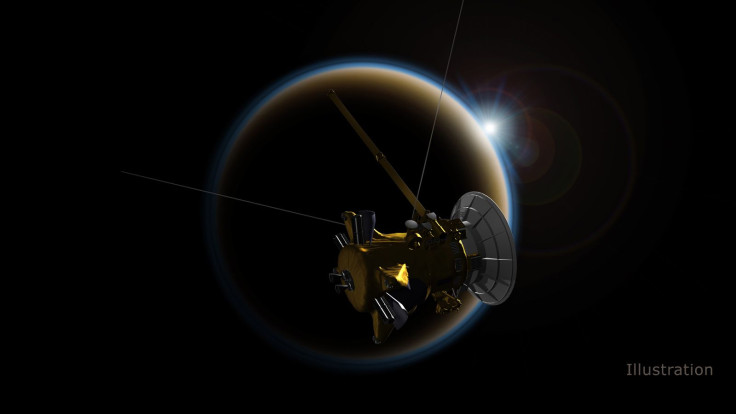Cassini Grand Finale: Spacecraft Does Final Flyby Of Saturn Moon Titan

It’s a week of goodbyes for the Cassini spacecraft that’s in its final days of space exploration after nearly two decades. On Monday, the craft made its last and closest flyby of Saturn’s moon Titan, sailing just 73,974 miles above the surface of the moon.
NASA doesn’t yet have any of the data or photos from this final flyby, also called a goodbye kiss, yet. The craft should make contact with Earth around 9:19 p.m. EDT on Tuesday night, once contact is made the information should stream down to Earth shortly after. At this time, those tracking Cassini’s path to the finale will check the trajectory the craft is on to confirm the path, location, date and time that the finale will occur. The craft should dive right into Saturn’s atmosphere on Friday where it will burn up and cease to transmit data or even exist.
This goodbye kiss between Cassini and Titan is what will provide the craft with its last gravitational push that it needs to get on track to burn up in Saturn’s atmosphere, according to NASA. If the flyby went as planned Cassini should be on track to make its finale on time and according to plan.
This close approach should have slowed down Cassini enough in its orbit around Saturn to lower the altitude of the craft. Then once it gets low enough in the atmosphere it will burn up due to friction. Other passes of Titan have never been this close so they have never lowered the trajectory of the craft. Of the 127 passes of Titan that Cassini has completed this is the first and only that will put it on the track to death. Titan has been used to adjust Cassini’s path before, but never like this.
The Cassini mission launched in 1997 and nearly seven years later it entered orbit around Saturn. October would mark two decades of travel for Cassini if it were going to last that long. The original mission was extended twice which has resulted in Cassini and the Huygens probe that it carried collecting data and exploring parts of space that had never been examined.
For the last five months Cassini has been traveling through Saturn’s rings, a mission it was never expected to complete and one that has resulted in new data on the planet. The craft has sent photos of the rings back to Earth that might help researchers unlock the mysteries of Saturn, its rings and its moons.
For those who have been working on Cassini since the early stages of development, the grand end to the mission is bittersweet. The craft was able to collected more data that anyone ever expected. Research on that data is funded for the next year and then some researchers are unsure of what will come next. The plunge is scheduled for Friday morning at 7:55 a.m. EDT or 4:55 a.m. PDT where mission controllers will be working to ensure a smooth ending.
© Copyright IBTimes 2024. All rights reserved.











